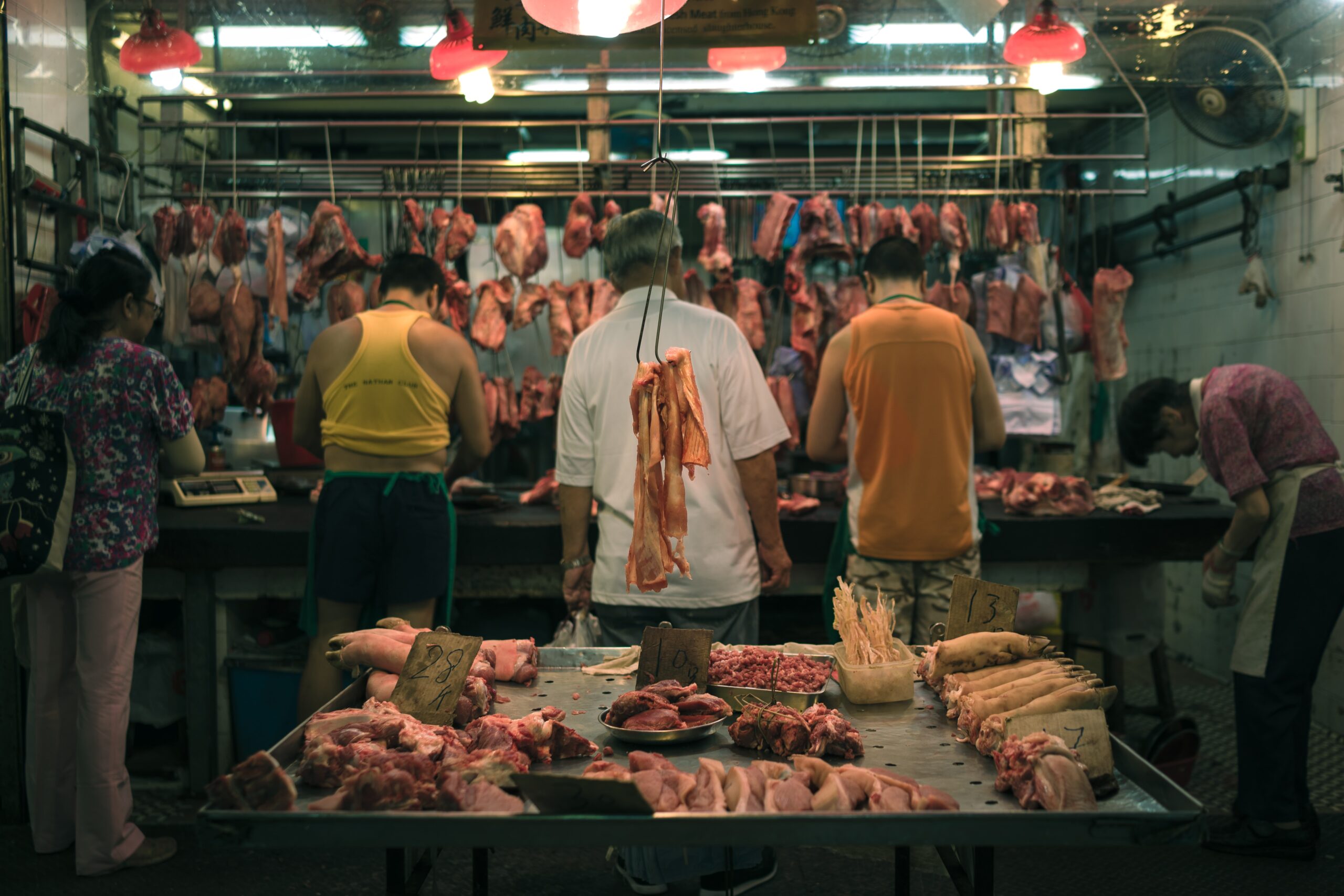The coronavirus pandemic has people urgently looking for solutions to deal with the crisis and prevent another one from emerging. This includes a growing call to end the world’s $300 billion legal wildlife trade. The exact origins of the Covid-19 virus remain unclear, however, and there is a large body of evidence pointing away from the legal sale of wildlife in the Wuhan market as the origin of the pandemic. The legal trade in wildlife provides key incentives for conservation around the world, contributes to food security, and holds the potential to help prevent the next pandemic. While expanded efforts to secure public health are essential, it is equally essential that interventions to do so are driven by facts rather than politics and that they build, rather than reduce, capacity to contain deadly and emerging diseases at their source.
The Road Out of Wuhan
Like outdoor markets throughout the world’s urban centers, the Hua’nan market in the Chinese city of Wuhan attracted vendors selling everything from fresh vegetables to seafood to game meat and wild animals used in traditional Chinese medicine and cuisine. The Chinese Communist Party’s claim that the Covid-19 pandemic originated in wildlife sold at the market is based on two data points: The first reported case of coronavirus infection was in one of the market’s shrimp sellers, and the majority of subsequent infections were found in the area of the market where wildlife was sold.
However, as knowledge about the pandemic and Covid-19 virus have progressed, links between the wildlife legally sold at the Wuhan market and the disease have increasingly come into question. A paper published by Chinese researchers in The Lancet identified the first case of coronavirus as having emerged in an individual—patient zero—who had no contact with the Wuhan market and who developed symptoms of the disease nearly a month before the shrimp seller originally suspected to be patient zero. Data in the study suggests that the first infections occurred in November of 2019, meaning that the virus was likely spreading in Wuhan before the cluster of cases was discovered in the market at the end of December. As Daniel Lucey, an infectious disease specialist at Georgetown University, told Science Magazine, “The virus came into that marketplace before it came out of that marketplace.”
Exactly how the virus came into the Wuhan market where it became amplified remains unknown. Initial findings from Chinese researchers pointed to pangolins as a possible vector for the disease. Pangolins are one of the world’s most endangered mammals. While pangolins are illegal to consume in China, they remain a sought after delicacy, and their scales continue to be legally allowed for use in traditional medicine. However, there is no evidence at present to suggest that patient zero had any contact with pangolins nor is there any evidence that pangolins were for sale at the Wuhan food market. Even if such evidence existed, the fact that the sale and consumption of pangolin for food is already illegal raises the question of whether or not more encompassing laws are needed or whether existing laws to counter illegal wildlife trafficking should be better resourced and enforced.
Additional research on Covid-19’s genomic sequencing from the Scripps Research Institute, published in the journal Nature, concluded the virus’s genetics indicate an animal host with a high population density, which pangolins are not. At present many researchers believe that Chinese or horseshoe bats are the most likely reservoir for the disease, but, as with pangolins, there is no evidence showing that bats were sold at the Wuhan market or that patient zero had any contact with the animals, further deepening the mystery of how the worst pandemic in over a century began. All we know for certain at the moment is that the virus originated in nature, possibly jumped from an animal host to the human population in or around the city of Wuhan, and that, contrary to widespread reports, this jump occurred prior to the outbreak at the Wuhan market. As of right now, there is no conclusive evidence indicating that the virus jumped from animals to humans as a result of the wildlife trade, legal or illegal.
Taking a Targeted Approach to Wildlife Trade
The lack of evidence connecting the pandemic to the legal trade in wildlife is critical for decision makers around the world to consider as they plot a path forward and seek to reduce the risks of future pandemics. The sustainable use of wildlife for commercial and other purposes has proven itself to be a highly effective tool for conserving wildlands and reducing poverty, both of which have important roles in preventing the spread of infectious disease. Blanket trade bans, like some have proposed, also risk making the jobs of public health officials significantly more difficult, leading to delayed investigations, sluggish responses, and lost lives when the next pandemic occurs. Rather than enact blanket bans on trade, effective policies will be more targeted, seeking to leverage the ability of trade to produce outcomes that reduce the risk of future disease outbreaks and expand the use of market- and rights-based conservation tools to limit the emergence of new pathogens.
There is a growing recognition that limiting the likelihood of future disease outbreaks and pandemics depends in part on maintaining the remoteness of areas where deadly and novel pathogens are likely to lay in wait. Recent outbreaks, such as with Ebola, have been closely associated with the development of wildlands that occurred because of economic necessity. Conservation programs that create viable economic alternatives and increase the opportunity costs of such development have the potential to act as a prophylactic guarding against any viral spillover into human populations.
Africa’s trophy hunting industry represents one highly effective example of this that is rooted in wildlife trade and that policymakers should avoid imposing additional restrictions on, as legislation debated last week in the California Senate would do. The economic incentives to conserve wildlands the hunting industry provides have prevented the clearing of an area that is more than six times the size of the US National Park System. Importantly, and in contrast to other conservation approaches, it has achieved this in a way that relies little, if at all, on foreign aid and donations, making it relatively self-sustaining. This is an important consideration as the world seeks to craft approaches in the context of a global economy left reeling by the pandemic.
Africa’s trophy hunting programs also have a track record of reducing poverty, a known factor in increasing individual risk of infection and, in turn, the risk of community spread of disease and eventual pandemic. This individual risk can stem from something as simple as access to clean water a person can use to wash their hands. Through revenue-sharing agreements with hunting operators, such as in Zimbabwe’s CAMPFIRE Areas, the rural poor are given the means by which they can improve their access not only to clean water and other key resources for disease prevention, but also to immediate healthcare through the construction of clinics that can serve as part of the world’s early warning system when disease outbreaks do occur.
These contributions argue for empowering Africa’s trophy hunting industry as part of any pandemic response. The surest way for countries like the United States to do this is to ease import restrictions on legally acquired hunting trophies for species like elephant and lion, hunts that often subsidize entire hunting operations. Such regulatory relief has the potential to help stabilize the industry and aid its recovery from the severe impacts the pandemic has inflicted on it and to ensure it can continue to produce benefits for both conservation and public health.
However, Africa’s trophy hunting industry lacks sufficient geographic scale to deliver the level of habitat conservation necessary to improve our collective security against future pandemics. Reaching that scale may be achievable by utilizing “debt for nature” swaps to help alleviate the mounting, pandemic-inspired debt crisis in emerging markets that are home to many of the wildlands thought to harbor novel pathogens like Covid-19.
In the midst of a long-term global recession, targeted, market-based approaches, including those that leverage the benefits of wildlife trade, will be key to putting the right measures in place for our collective health and security.
Debt for nature swaps are agreements whereby a country’s debt is forgiven in exchange for a long-term commitment and investment in conserving a given area. Such agreements give impact investors, non-governmental organizations, and others a powerful tool to help achieve conservation, economic, and social goals simultaneously. For such agreements to have maximum effectiveness, however, it will be essential that they prioritize the conservation of areas where the risk of future viral spillover is thought to be most likely. Identifying and ranking the relative importance of such areas should be a research priority for conservation scientists, virologists, and others so that their expertise can successfully guide any attempts to use debt for nature swaps as a public health tool.
Interventions such as these will likely be more effective than blanket bans on wildlife trade, which, if adopted, have the potential to actually increase risks to public health. As noted in a letter to the World Health organization signed by myself and more than 250 other researchers, conservation practitioners, and stakeholders focused on wildlife trade and public health, criminalization of the trade in wildlife is likely to push markets underground, making it more difficult for public health investigators to trace the origins of future disease outbreaks, delaying responses to keep people healthy, and slowing the search for treatments and cures.
The emergence of black markets is exactly what happened following trade bans in the wake of the 2013-2016 Ebola outbreak and what is currently happening in China following its recent closures of domestic wildlife markets. In such situations, any standards of hygiene and animal welfare are likely to be significantly decreased, in turn increasing the risk of disease transmission, and increased criminal penalties will create a disincentive for people to cooperate with investigators should an outbreak occur. Where wildlife trade does not represent a clear, significant threat to public health our security will be better assured by efforts to improve sanitation and monitoring of that trade than it will be by expanded criminalization.
Raising our defenses against the next pandemic requires we resist the urge to “do something” and instead adopt policies and programs that do the right things. In the midst of a long-term global recession, targeted, market-based approaches, including those that leverage the benefits of wildlife trade, will be key to putting the right measures in place for our collective health and security. Blanket policies, heavily dependent on public funding, are at great risk of coming up short and even working against their intended goals. Internalizing these realities in ongoing discussions around pandemic response policy is essential if we are to succeed in reducing the chances of future global health crises.




